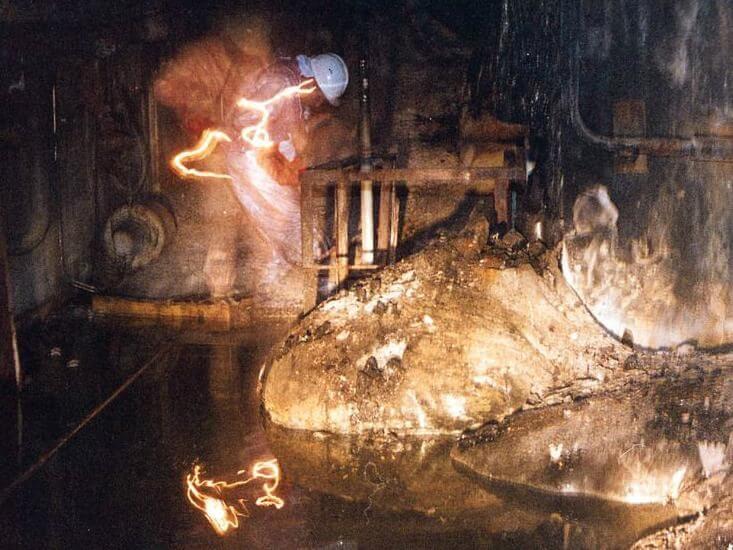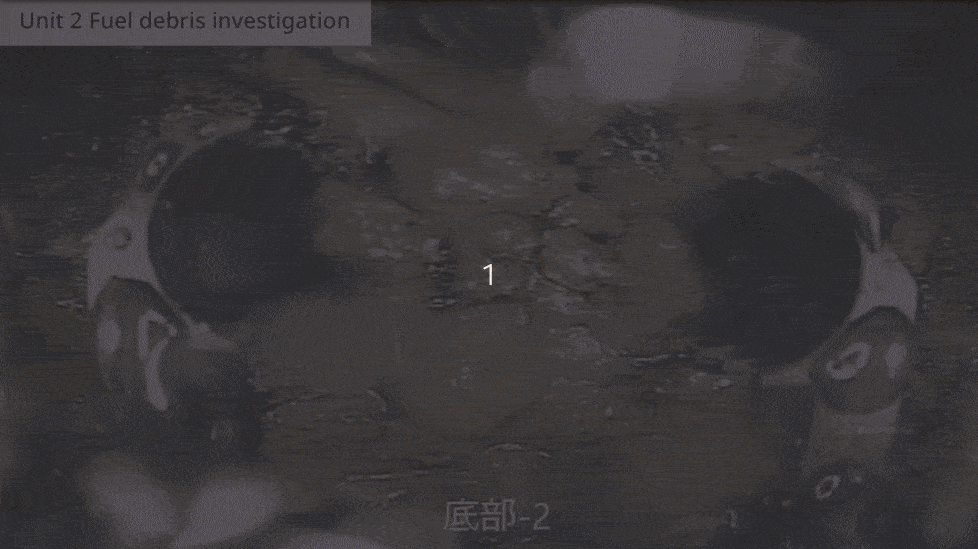The dangerous corium

Every so often I stumble upon some nuclear research which seemingly more than not points to corium. A material that we generically call any melted mixture of nuclear fuel, control rods and fission by-products.
As that sounds - it isn't good and normally is only created when a reactor meltdown occurs. This material can hit some really insane temperatures depending on the materials in play. When corium is first created and in the melted liquid-like form it can reach almost 5,070 degrees Fahrenheit. Of course that temperature doesn't come near what the Large Hadron Collider can do, but that is a dangerous amount of heat.

Take this famous photo above where Chernobyl's remaining sludge of radioactive mess that melted out of its containment. This material in the moment was so dangerous you'd probably die in just a few minutes of standing in range of it.
In the case of above - 10 years had passed since the incident and even then the photograph was developed with oddities from the lingering radiation.
Its tough to really imagine the pure strength and power of this corium. Imagine the heat needed for some liquid metal contents to eat through concrete falling further and further down with gravity.
Like most kids probably thought when they imagined digging a hole through the Earth towards China - it has a name "China syndrome" in this nuclear world. It was a metaphorical description of a melted nuclear core melting all the way through the Earth - clearly which couldn't happen in reality.
So how often have we accidentally produced corium?
Three Mile Island
- The slow partial meltdown of the core left some corium at the bottom of the reactor.
Chernobyl
- As explained above, a huge amount of corium dripped under the reactor to the bottom of the steam corridor.
Fukushima Daiichi
- Unit's 2 has a pool of corium from the meltdown it received.
- Possibly Unit 1 & 3 does as well, but this disaster is too recent for all the details.
This might explain why corium is barely understood - we only see it when man-made nuclear creations hit the absolute pinnacle of failure. Even when we do they are all completely different in terms of the chemical compositions.
Its like when people made "suicide drinks" which were just a combination of every soda on the machine. Sure every single one of these created was different, but they are all called the same.
I believe we just needed a word that meant melted nuclear reactor waste and corium was it. Such a short word that carries a huge amount of danger behind it. Corium isn't just dangerous as it melts around - it stays dangerous for centuries.

Since Fukushima incident occurred quite recently we have the power of some new technology to study and investigate this corium. Not only that, but the repair effort is extremely documented online.
This is what led to the video demonstration of robotic tools working to test if extraction of the corium was even possible.
So corium is a scary thing to produce or get near. The pure ionizing radiation it emits will break down any bonds in its path whether its human flesh or a collection of atoms and molecules. Only a long stint of time will slowly stabilize or degrade the corium - we just don't know exactly when or how that occurs.
Initial research was the Chernobyl accident corium would simply degrade into a powder. While that wasn't accurate the corium is cracking and weakening in every case we've seen so far.

So while animations make corium seem like a little red melting mush, we know the real power and danger it contains. Hopefully that will be the last corium accidentally produced we will ever see.
